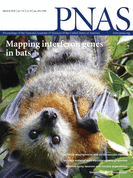 Sometimes, corrections are so extensive, they can only be called one thing: Mega-corrections.
Sometimes, corrections are so extensive, they can only be called one thing: Mega-corrections.
Recently, the Proceedings of the National Academy of Sciences (PNAS) issued a four-page correction notice to a paper about a compound that appeared to reduce the chances a cancer will recur. The notice describes figure duplication, problems with error bars and figure legends — as well as the loss of statistical significance for some data.
According to the authors’ statement in the notice:
During the process of data checking, we detected mistakes in the expression of sample numbers, error bar expressions, and figure preparation.
Describing the errors, and presenting updated figures, occupies four pages.
“Atrial natriuretic peptide prevents cancer metastasis through vascular endothelial cells” has been cited 32 times, according to Clarivate Analytics’ Web of Science.
After addressing the errors, some of the data were no longer statistically significant. The notice updates that section of the text accordingly:
‘To ascertain the efficiency of ANP administration, we measured the blood levels of cGMP. However, the data did not reach statistical significance when ANP (0.5μg·kg·min) was infused subcutaneously in the mice (SI Appendix, Fig. S8), although the blood cGMP levels showed a tendency of increase after ANP administration.’
Did the journal consider retracting a paper that needed such extensive corrections? A spokesperson for PNAS told us:
The editor and the Board member considered this Correction. The editor felt that the errors did not substantially affect the main findings of the article. The Board member concurred and concluded that a correction was sufficient in this case and the article did not need to be retracted.
Like Retraction Watch? You can make a tax-deductible contribution to support our growth, follow us on Twitter, like us on Facebook, add us to your RSS reader, sign up for an email every time there’s a new post (look for the “follow” button at the lower right part of your screen), or subscribe to our daily digest. If you find a retraction that’s not in our database, you can let us know here. For comments or feedback, email us at [email protected].
It is instructive to review the PubPeer thread on this paper:
https://blog.pubpeer.com/publications/C4D85860F12DA1F1B0F4A6D39A9F0D
In this case “the process of data checking” appears to have involved some pretty extensive post-publication peer review [PPPR] by scientists that were not the authors.
It’s my observation that when one see a “mega-correction” [good term] or two or more corrections of the same paper over several years that the authors have vigorously resisted the retraction option at all costs.
It’s also rare that these mega-corrections/multiple corrections are solely driven by the authors’ altruistic goal of correcting the scientific literature. Often – and it may not be the case always or here – these involve a contentious three-way battle with whistleblowers, authors and editors.
That editors ultimately side with authors [many of whom are apparently willing to die rather than retreat from retraction hill], over the concerned scientists involved in PPPR aka whistleblowers in so many of these mega-correction/multiple correction instances is also highly instructive and not a tiny bit concerning.
After reviewing the PubPeer thread in the instant case one truly wonders why the authors themselves would not have wanted the paper cleanly retracted.
What a joke. Most published ‘research’ is wrong
I’m not aware of the basis for your claim that most published research is wrong, but I can state the following, entirely honestly, that I’ve never published anything “wrong” to my knowledge. And none of my papers has shown up at pubpeer. I do know that some of my publications turned out to be insignificant, though I wasn’t aware at the time that this would be the case.
I am sorry, Kaycee, but Ralph is most probably right. The very few times researchers have seriously tried to replicate previous published conclusions, they were successful with only 11% (Amgen study) and 25% (Bayer study) of the 50-70 papers included in the studies.
None of the papers which were impossible to replicate in the orignal labs have been corrected or retracted. That tells a lot about the itegrity and attitude among the top researchers at the prestige research institutes. Sadly enough several clinical studies have been initiated based on these non-replicable invalid data.
‘During the process of data checking, we detected mistakes in the expression of sample numbers, error bar expressions, and figure preparation.’
It is a little worrying that there seems to be so little quality control by the authors. Aren’t numbers, figures and error bars checked by at least one other person? But I bet the references are all correct…
Now replaced by a shorter Retraction Note.
https://www.pnas.org/content/118/44/e2117617118.long